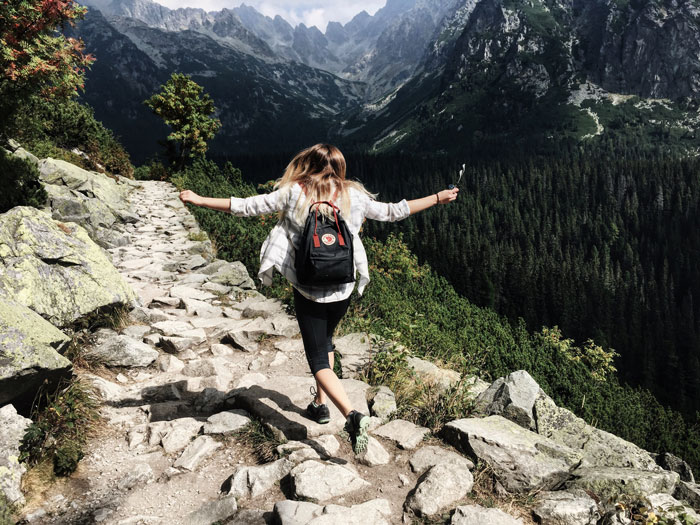While hiking, it’s important to be aware of your surroundings and knowledgable about all of the possible hiking injuries that could occur while on the trail. Hiking is an excellent way to get outdoors and experience nature, but it also comes with some opportunities for injury. It is important to be aware of certain steps and precautions you can take to prevent these common injuries from ever happening in the first place.
Sunburn
During the summer, you’re likely to soak up some rays. Sometimes, you expose yourself to too many rays, and you end up pink, in pain, and covering yourself in various Aloe Vera products. To prevent sunburn, you need to wear long sleeve shirts or long pants (if it’s not too hot), apply sunscreen (and reapply it throughout the day), and wear protective gear like hats and sunglasses.
Blisters
One of the worst things in the world is developing a painful blister on your foot. It hurts to walk, and you’re terrified it’s going to pop and become infected. When trying to prevent blisters, your best bet is to break in your hiking shoes before hitting the trial. If your shoes rub against your skin, make sure to wear socks or put athletic tape over the area to prevent blistering from the constant friction.
Bug Bites
Pesky little bugs are unavoidable when outdoors, but there are some ways you can deter them from biting, stinging, or irritating your skin. If you’re able, wear clothing that covers your entire body. Wearing thin and protective clothing can prevent bugs from ever getting onto your skin. On top of that, you can purchase bug repellant to scare away the last few.
If you do receive a bug bite on the trail, you can read this blog for information about some of the best home remedies to alleviate your pain or itching.
Twisted Ankle
When hiking on a natural trail, you’re likely to experience uneven terrain or slippery surfaces. It’s hard to avoid twisting an ankle when walking on different paths, but you can take some steps to try and stop the twist from ever happening. It’s important to purchase shoes that stabilize your ankles, and although it might not be the snazziest accessory, walking sticks can help keep your steps balanced as well.
Minor Scrapes
Once again, the best way to prevent scratches from random branches is by wearing longer clothing. However, you can also stay away from walking through brush and tall plants to avoid hidden thorns or sharp branches. If something does cut you, make sure to apply antibiotic cream to the wound and to cover it with a band-aid. By doing this, you should be able to prevent the scrape from getting worse or infected.
Cramping
While hiking, cramping is typically caused by dehydration. The simplest way to avoid leg cramps is by drinking enough water, and to drink water even though it might not be sweltering outside. Also, you need to stretch before your hike even begins. If you do start to experience cramping on the trail, you could always eat a banana for the potassium or drink something with added electrolytes, like a sports drinks.
Fatigue
To prevent becoming exhausted on the trail, make sure to stay nourished throughout the hike. Hiking is a strenuous activity, and you burn a lot of calories. When packing for your hike, make sure to bring lightweight snacks packed with a lot of calories to eat along the way. It’s also important to make sure you remain hydrated during the entire trek, so pack plenty of water as well.
Source:
http://blog.theclymb.com/tips/prevent-10-common-hiking-injuries/

